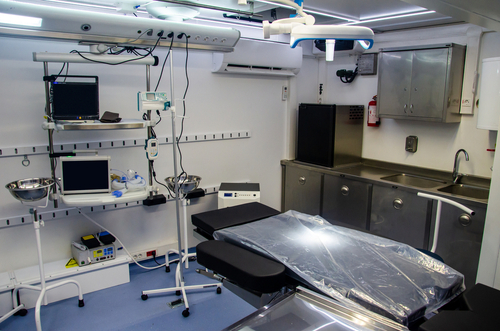Session: Bridge the gap—Finding a common mission between the OR and SPD

Editor's Note Rebuilding trust and redefining teamwork between the OR and sterile processing department (SPD) turned a near-failure into a high-functioning system at UCLA Health, according to Ronald Perez, JD, MSN, RN, NEA-BC, CNOR, executive director of perioperative services, and Jasmine Briones, MSN, RN, CNOR, director of perioperative services. What…
Workshop: Mastering The Joint Commission standards and CMS regulations

Editor's Note Hospitals that succeed in surveys are those that “hardwire safety so you’re not ramping up and down,” said John R. Rosing, MHA, FACHE, executive vice president and principal of Patton Healthcare Consulting. Speaking at the OR Manager Conference, Rosing reminded perioperative leaders, “If we’re really about providing quality…
Integrating robotics for outpatient surgery: What ASC leaders need to know

Robotic surgery has moved from cutting-edge to commonplace. The question is no longer whether to use robotics but when to introduce it and how to ensure adoption is efficient, affordable, and seamless for surgical teams. Ambulatory surgery centers (ASCs) are increasingly adding robotics to their service lines, driven by the…
Considerations for external transportation of processed medical devices

The centralization of medical device processing to one facility is becoming more prevalent. Centralizing sterile processing activities reduces expenses while concentrating expertise. However, this also introduces new concerns. When sterile processing is located within the same building where instrumentation is used, transport occurs over smooth floors in a controlled environment…
5 reasons why perioperative leaders deserve to attend the 2025 OR Manager Conference

Editor's Note This October 28–30, perioperative leaders will gather in Anaheim, California, for the OR Manager Conference—the only event designed exclusively for OR, ASC, PACU, and SPD managers and directors. More than a conference, it is an immersive experience that blends education, networking, and practical solutions to help perioperative leaders…
Centralized sterile processing cuts costs, complexity for four ASCs

Once limited to hospital inpatient settings, total joint surgery is increasingly common at ambulatory surgery centers (ASCs) across the US. What is not so common is performing these complex procedures without the benefit of an onsite sterile processing department (SPD). And yet, that is exactly what we have accomplished at…
Centralized sterile processing: An ASC's journey to offsite sterilization

Editor’s Note: This page is a companion piece to the main article, Centralized sterile processing cuts costs, complexity for four ASCs. Implementing offsite sterilization is a major project. At Total Joint Specialists, our journey began gradually, growing in scope over time as the team became comfortable with the process…
Mobile ORs can change the game, bridge gaps in surgical care

Imagine an innovative, safe, and highly efficient OR not confined by walls but on wheels—crossing rugged terrains, bustling cities, and disaster-stricken areas to deliver life-saving surgical care in underserved areas. That is the premise and promise of mobile ORs. They are not just mobile units. With some of the technological…
Revised sterilization standards demand urgent attention from perioperative leaders

Editor's Note New and revised sterilization and reprocessing standards are reshaping the landscape for sterile processing departments, placing greater emphasis on chemical modalities, device-specific protocols, and system-wide quality management, according to the Healthcare Purchasing News May 27 update on compliance and standards. Among the most significant developments is the overhaul…
Standards strengthen sterilization, disinfection process chains

Preventing infection from contaminated surgical tools requires attention to every link in a complex chain of processes, from point-of-use pretreatment in the OR to the moment the freshly disinfected or sterilized item arrives at the next patient’s bedside. For those on the front lines, manufacturers’ written instructions for use (IFUs)…

 Free Daily News
Free Daily News